Projects: Viewshed
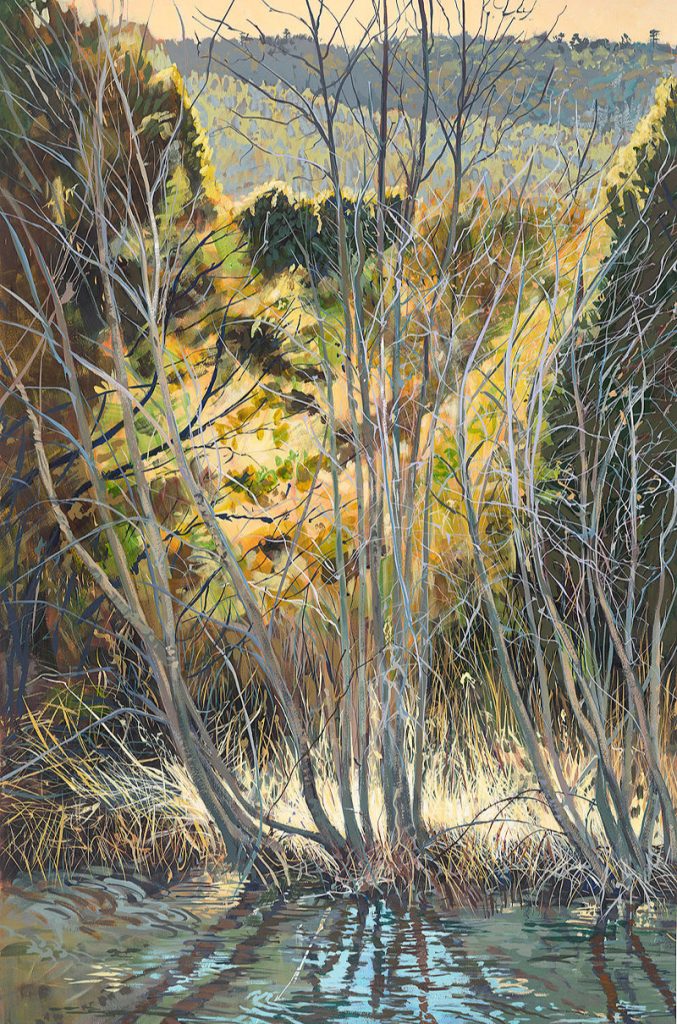
“A viewshed designates a field of vision witnessed by onlookers. It can be a forest, grassland, ocean, or desert, and represents a biotic community within a cultural context. To have a viewshed, there must be a viewer, and a reason for this spot or area to be scrutinized. Like the word landscape, viewshed implies a witness, often for aesthetic reasons, or with an eye towards conservation because of the natural beauty of the place.”
Gretel Ehrlich, in Home Ground: Language for an American Landscape, 2006, Trinity University Press, eds. Lopez and Gwartney
VIEWSHED: EXPLORATIONS IN LANDSCAPE
Jane Starks and Debora Hunter
Beatrice M. Haggerty Art Gallery at the University of Dallas
November 7 – December 14, 2014
Up Close with the Landscapes of Texas and New Mexico
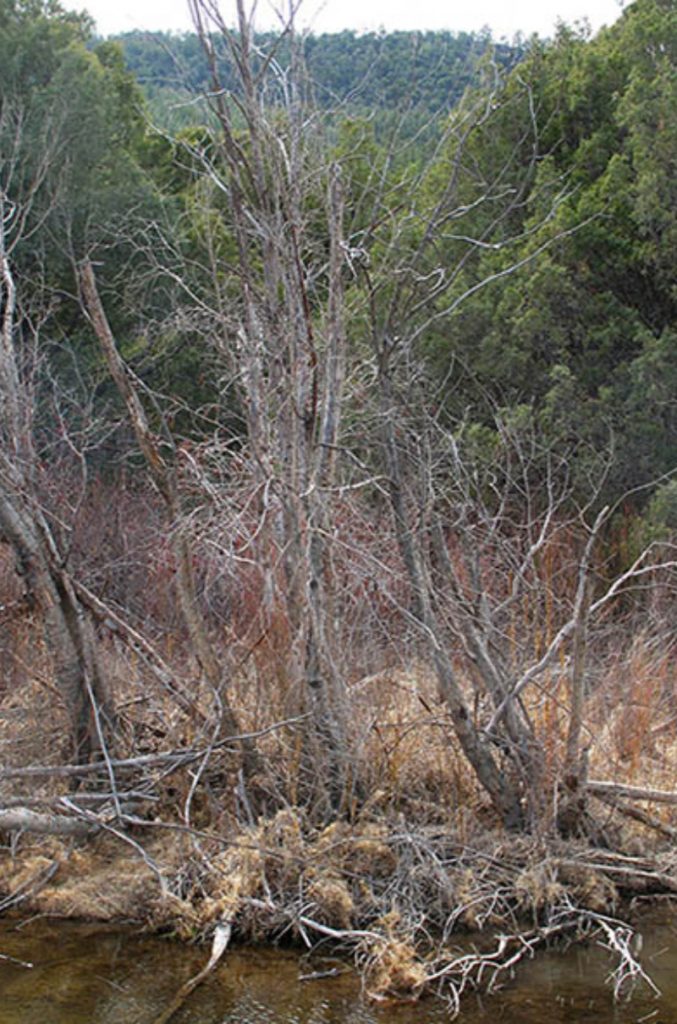
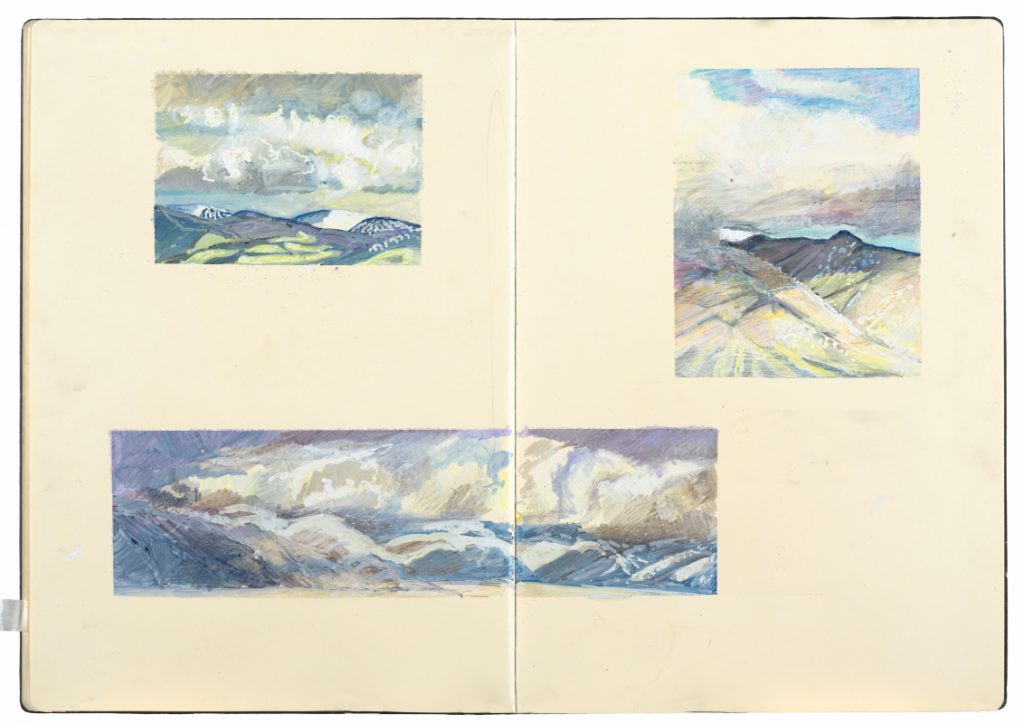
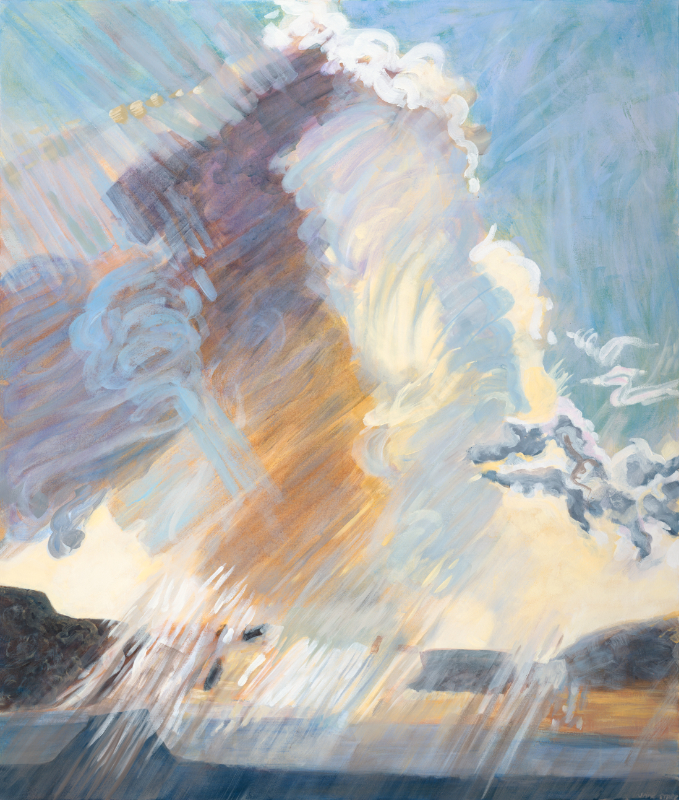
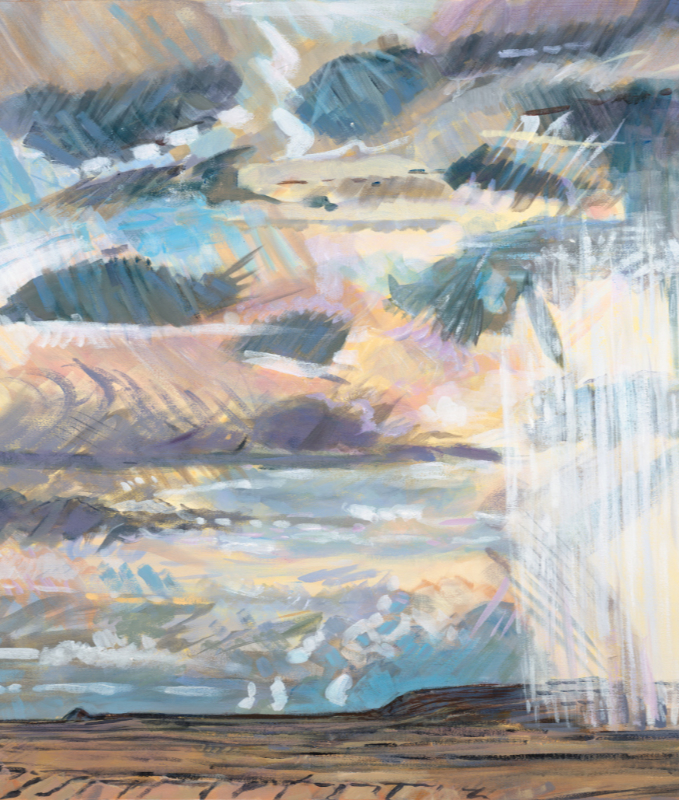
Associate Professor of Photography Debora Hunter and painter Jane Starks (M.F.A. Art ’99) collaborated as featured artists in “Viewshed: Explorations in Landscape,” an exhibition held November 7-December 14, 2014, at the Haggerty Art Gallery at the University of Dallas.
The exhibition included works by Associate Professor of Photography Debora Hunter and painter Jane Starks (M.F.A. Art ’99) made in the same general locations in Texas and New Mexico. The show investigates the approaches, materials and processes of each artist, exploring how their chosen media affects their final expression.

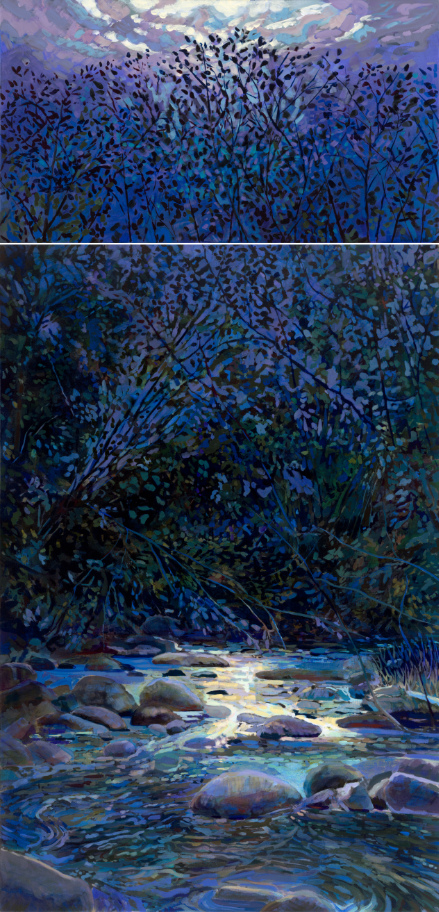
The pair first met in 1998 when Starks enrolled in SMU’s M.F.A. art program to begin a second career as a painter. Their friendship developed in 2006 based on mutual artistic interests in the landscape of New Mexico. Hunter had been teaching at SMU-in-Taos and photographing the cultural landscape there for many years, and Starks had recently relocated from Dallas to Taos to pursue plein-air painting. “We realized we had a great deal in common in our focus on the natural environment and its representation through art,” said Hunter.
Hunter’s photographs in the show are drawn from three of her recent series. Images from “Landmarked: Photographs from Taos, New Mexico” explore the relationship between the manmade and natural, documenting man’s markings amid the grand sweep of ancient landforms and dramatic sky. Images from another series, “Refracted,” were a reaction to Stark’s work.
“Jane works with a close focus, painting images that celebrate the beauty of intimate spaces surrounding creeks and rivers,” said Hunter. “In response to Jane’s layered and luminous depiction of water, light and shadow, I departed from my usual documentary approach and produced a series of close-up photographs titled Refracted, concentrating on reflections, specular highlights and shadows falling on the water’s surface. For this show, Jane and I made two trips together to the Frio River in the Hill Country this past winter, and in the summer I photographed creeks near Jane’s house in Taos.”
Hunter says that while she was intrigued with the visual phenomena involved in using the camera to depict light on water, the drought conditions in the areas she photographed made working difficult. “Unable to overlook the impact of extreme weather conditions, I most recently produced a third series titled “Abstract No More.” By correlating drought maps for my photographic location in New Mexico with dates of international ‘natural’ disasters, I call attention to the spatial and temporal immediacy within earth’s water system and to my own position in our global climate crisis.”
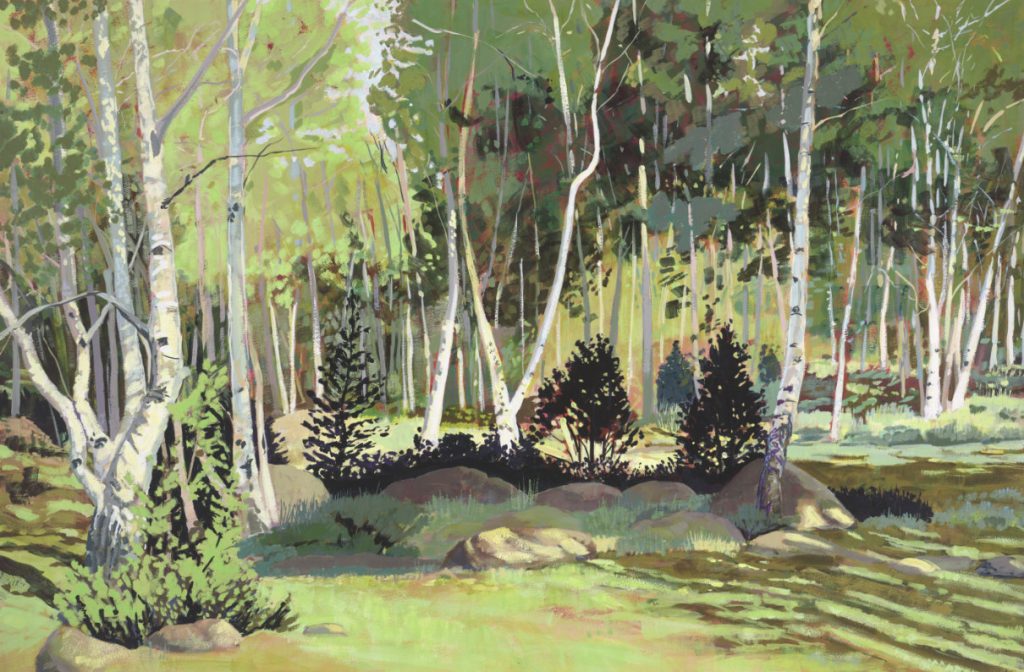
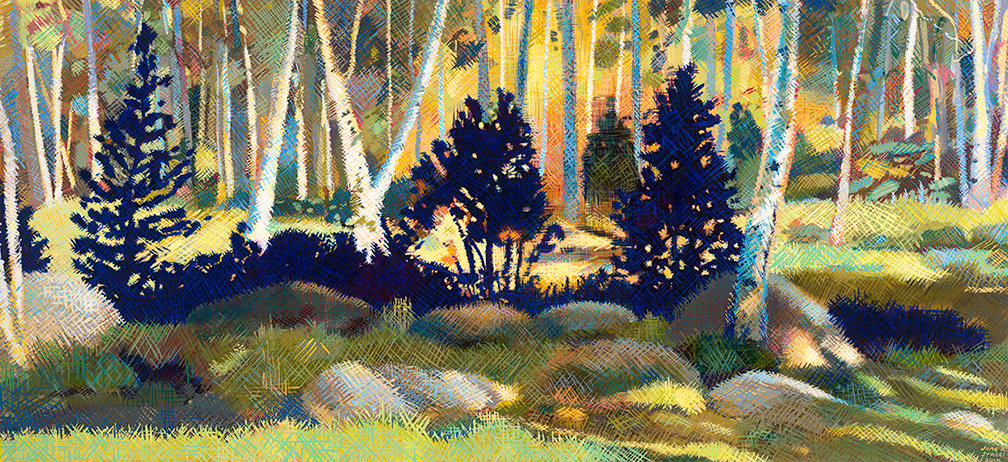
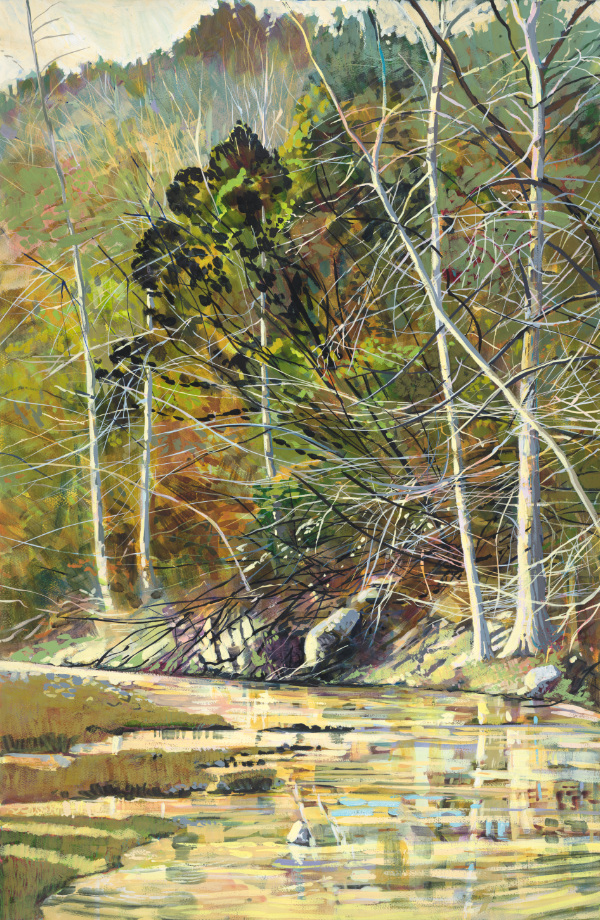

Stark says that illusion, the vehicle of photography and painting, is a powerful lens to reality. “I believe that, for photographers and painters, the brain is the lens, and together, through close observation, painting and photography create profoundly beautiful and authentic images that can shape our awareness of the landscape in important ways,” said Starks. “For this show, I have used the computer to data-mine my paintings to enlarge my aesthetic horizons and expand (begin!) my studio practice. I have been able to alter, transform, and expand imagery in the original paintings; to push painting sometimes in more abstract direction; to shift scale from small to large; to change media and techniques. I have used the reality of my paintings to create a new reality.”